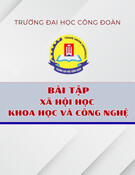
TNU Journal of Science and Technology
229(11): 484 - 489
http://jst.tnu.edu.vn 484 Email: jst@tnu.edu.vn
AN INVESTIGATION ABOUT FORMS OF ADDRESS IN VIETNAMESE
THROUGH THE REPORT OF A MARRIED COUPLE
Nguyen Thi Ngan*
Nha Trang University
ARTICLE INFO
ABSTRACT
Received:
28/8/2024
Vietnamese is a member of the Austroasiatic language family spoken by
approximately 100 million people, predominantly in Vietnam, a country
located in Southeast Asia. The language features a distinctive system of
address terms that is deeply intertwined with both cultural and linguistic
norms. Understanding these address codes is crucial for cultural immersion
and for preventing potential misunderstandings in cross-cultural
interactions. This study delves into the application of Vietnamese address
terms across various familial and social contexts, examining how these
terms are used to navigate relationships and communication settings.
Through personal observations and in-depth interviews with a couple, the
study explores the nuanced ways in which they addressed each other
throughout their marriage. It was found that the choice of address terms is
influenced not only by relational and situational factors but also by the
individuals' sentiments, attitudes, and emotional states toward one another.
This reveals that address terms in Vietnamese are not static but
dynamically reflect the evolving nature of personal relationships and
emotions. By analyzing these patterns, the study contributes to a deeper
understanding of the role of address terms in interpersonal communication
and highlights the intricate ways in which language and culture intersect.
Revised:
30/9/2024
Published:
30/9/2024
KEYWORDS
Terms of address
Vietnamese
Language
Culture
Communication
KHÁM PHÁ CÁCH XƯNG HÔ TRONG TIẾNG VIỆT
QUA LỜI KỂ CỦA MỘT CẶP VỢ CHỒNG
Nguyễn Thị Ngân
Trường Đại học Nha Trang
THÔNG TIN BÀI BÁO
TÓM TẮT
Ngày nhận bài:
28/8/2024
Tiếng Việt là một ngôn ngữ thuộc ngữ hệ Nam Á với hơn 100 triệu người
sử dụng, chủ yếu ở Việt Nam, một quốc gia nằm ở Đông Nam Á. Ngôn
ngữ này có hệ thống các từ ngữ xưng hô đặc biệt, đan xen sâu sắc với cả
chuẩn mực văn hóa và ngôn ngữ. Việc thông thạo các từ ngữ xưng hô này
rất quan trọng để hòa nhập văn hóa và tránh những hiểu lầm tiềm ẩn trong
giao tiếp. Nghiên cứu này tìm hiểu việc sử dụng cách xưng hô tiếng Việt
trong nhiều bối cảnh gia đình và xã hội khác nhau, xem xét cách các từ
ngữ này được sử dụng để điều hướng các mối quan hệ và bối cảnh giao
tiếp. Thông qua quan sát và phỏng vấn sâu với một cặp đôi, nghiên cứu
khám phá những cách tinh tế mà họ xưng hô với nhau trong suốt cuộc hôn
nhân của họ. Nghiên cứu cho thấy việc lựa chọn các từ ngữ xưng hô
không chỉ bị ảnh hưởng bởi các yếu tố quan hệ và tình huống mà còn bởi
tình cảm, thái độ và trạng thái cảm xúc của mỗi cá nhân đối với nhau.
Điều này cho thấy các từ ngữ xưng hô trong tiếng Việt không phải là tĩnh
mà phản ánh động bản chất phát triển của các mối quan hệ và cảm xúc cá
nhân. Thông qua phân tích này, nghiên cứu góp phần vào việc hiểu sâu
hơn về vai trò của các từ ngữ xưng hô trong giao tiếp giữa các cá nhân và
làm nổi bật những cách phức tạp mà ngôn ngữ và văn hóa giao thoa.
Ngày hoàn thiện:
30/9/2024
Ngày đăng:
30/9/2024
TỪ KHÓA
Từ xưng hô
Tiếng Việt
Ngôn ngữ
Văn hoá
Giao tiếp
DOI: https://doi.org/10.34238/tnu-jst.11025
*Email: ngannt@ntu.edu.vn

TNU Journal of Science and Technology
229(11): 484 - 489
http://jst.tnu.edu.vn 485 Email: jst@tnu.edu.vn
1. Introduction
Vietnamese is classified as an Austroasiatic language, forming part of a language family that
includes Khmer and Mon as its most prominent members. This paper aims to explore how
Vietnamese address terms are employed in familial relational dynamics and communication
scenarios. By examining how these terms are employed in different setting, the study aims to
reveal the underlying social and cultural mechanisms that influence their usage. It explores how
address terms reflect and reinforce the intricate structure of Vietnamese society, including aspects
such as age, gender, familial rank, and social status as well as how they might vary depending on
the nature of the relationship between the interlocutors. Even though much research has delved
into the complex usage of Vietnamese terms of address in social communication scenarios, not
much has investigated aspects such as the dynamic use in specific situation. The study also
analyzes how changes in a person‟s life circumstances, such as becoming a parent or grandparent,
affect the terms of address used in communication. This includes analyzing how address terms
adapt to reflect evolving relationships and social roles over time. By incorporating observations
and in-depth interviews, the research provides insights into how individuals consciously or
unconsciously navigate these linguistic conventions to manage social interactions and express
their attitudes and emotions.
The system of addressing terms in Vietnamese is not merely a linguistic feature but also a rich
reflection of cultural and social values, presenting a fascinating convergence of both linguistic
and cultural dimensions. In Vietnamese, terms of address are intricately linked to social
hierarchies, relational dynamics, and cultural norms, making them a crucial element for effective
communication. The complexity of this system extends beyond their grammatical function; they
embody social structures and cultural values. An application of certain terms of address can
indicate not only the relative age and status of the interlocutors but also their emotional closeness
and the level of formality in the interaction. This layered system of address underscores the
importance of context in Vietnamese communication, where the choice of a pronoun can reflect
and influence social dynamics.
For Vietnamese, before one enters any conversation with another, they must decide how to
address that person. In some cases, a name or a general pronoun can be enough for one to get by
a quick conversation. However, in some other cases, one can put themselves in trouble if they fail
to address their conversation partner correctly. Therefore, one does need to learn more so as to
address people appropriately for better communication results. Factors such as social status, sex,
age, family relationship, occupational title, official rank, or the nature of the relationship between
the interlocutors could decide how they address each other in their conversations [1].
Addressing terms are socially driven [2], and titles and forms of address are important,
sensitive indicators of social status [3], or emotions and social distance [4]. Studies in languages
have pointed out that the usage of terms of address is usually subject to social and ideological
matters. The system of address in a language provides clues to the social class hierarchy and also
social values of the community using that language. Brown and Gilman [5] conducted a study on
pronouns in some European languages (German, French, and Italian) and found that there was a
connection between social structure, group ideology, and the semantics of the pronouns. They
also showed that a person‟s consistent pronoun style implied his or her class status and political
views. A person could also express transient moods and attitudes by varying his or her pronoun
style from time to time [5]. Other research has also pointed out that the rules of address can be
symmetric or asymmetric dependent on status-marked situations, social rank, or personal identity
(age, sex, status...) [6].
In the Vietnamese language, the choice of personal pronouns pragmatically reflects either
intimacy or familiarity among close friends of the same age, or a lack of deference and high
degree of arrogance towards the addressee and/or third-party pronominal referent of superior age

TNU Journal of Science and Technology
229(11): 484 - 489
http://jst.tnu.edu.vn 486 Email: jst@tnu.edu.vn
[7]. In other words, the selection of personal pronouns in informal situations takes into
consideration the age factor as priority. Thus, it's not unusual for strangers to ask each other about
age when they first meet, in order to establish the proper terms of address to use. The second
factor will be sex. This means that a person‟s use of pronouns can tell if that person is a „he‟ or a
„she‟ (e.g.: male/female: anh/chị, chú /cô...). It should be noted that not all personal pronouns
reflect sex. Those such as em, cháu... reflect inferiority rather than the sex of the speaker.
A personal pronoun that can be used in formal situations is tôi [7]. Tôi is the most neutral term
to be used in social situations. However, Luong [8] found the use of “tôi” among family
members as a negation of solidarity and an indication of the lack of deference towards the
referent. A sudden shift to “tôi” during a conversation among interlocutors could indicate a mood
change include dissatisfaction or even anger arisen [9]. The "true" pronouns, such as “tôi”, are
used quite limitedly in familial communication scenarios. For most situations, kinship
terminology is used when referring to oneself, the audience, or a third party [8]. These terms
might vary in different dialects of the Vietnamese language.
In non-kinship communication context, a Vietnamese will consider several factors before they
address someone. It is not uncommon for them to ask a person on the first meeting questions
about age, social position, their relations with someone they know, or other factors relevant to the
cause of their encounters. Given this cultural aspect, various terms could be used to refer to or
address the first, second, and third person (singular and plural). Terms that are used in informal
situations might not be used, or are not considered appropriate in more formal situations. There
are also terms that are no longer used as a result of social changes (i.e. terms used by or to
indicate kings/queens).
As far as kinship addressing, Vietnamese has a saying that “Một giọt máu đào hơn ao nước lã”
(literally translated as a drop of blood is better than a pond of water, or “blood is thicker than
water”). Kinship is unquestionably very important and must be recognized. One shall acknowledge
and address their relatives correctly (immediate family members or extended family members).
2. Methodology
Data for this paper was gathered through a series of in-depth interviews conducted with a
married couple. The primary aim of these interviews was to explore the kinds of address terms
used by the couple throughout the course of their relationship, tracing the changes from their
initial meeting up to their 52nd wedding anniversary. Semi-structured interview questions were
developed focusing on eliciting detailed responses about the various factors influencing their
choice of address terms at different stages of their relationship. The interviews sought to uncover
how specific terms of address were used in relation to significant life events, shifts in the nature
of their relationship, and other contextual variables. The interviews were recorded and
subsequently transcribed for analysis. The interviews were conducted from June to August, 2015
with two face to face interviews and three phone interviews in a total of 85 minutes.
3. Findings and discussions
In the eyes of Westerners, Vietnamese people might be perceived as reserved or shy, yet this
characterization overlooks their deep-seated value of interpersonal relationships and
communication. Contrary to the image of reticence, Vietnamese culture places a high value on
engaging with others through conversation. The ability to communicate effectively is a
fundamental aspect of social interaction and is emphasized from an early age. This is captured in
the traditional saying “Học ăn, học nói, học gói, học mở,” which could be literally translated as
"learn to eat, learn to talk, learn to wrap, learn to open," highlighting the importance of mastering
verbal communication alongside other skills.
Indeed, in Vietnamese society, individuals with strong verbal skills are often more readily
received and well-regarded. However, the concept of “good verbal skills” encompasses a wide

TNU Journal of Science and Technology
229(11): 484 - 489
http://jst.tnu.edu.vn 487 Email: jst@tnu.edu.vn
range of abilities beyond mere eloquence. The practice of choosing the appropriate address term
is not just a matter of politeness but serves as a reflection of Vietnam‟s rich cultural heritage and
intricate social structure. It was fascinated to find that the couple could use various terms of
address, and these kept changing from the moment they got to know each other and during their
marriage (Table 1). When they were not married yet, the use of terms showed the level of
intimacy with social distance marked as positive. However, after they got married the terms
reflected their relationship, moods, and even important events of their life (having children,
having grand-children, or reaching certain ages...). The man had used at least four terms (tao, his
first name, tôi, anh) to refer to himself and 13 terms to address his wife (mày, her first name, ấy,
em, mình, bà xã, mẹ nó, mẹ thằng cu, mẹ đĩ, mẹ cô út, cô, bà, cụ). The woman had also used at
least four different terms to refer to herself (tao, her first name, tôi, anh) and 11 distinguished
terms (mày, his first name, ấy, anh, mình, ông xã, bố nó, bố thằng cu, bố cô út, ông, cụ) to refer
to her husband in conversations. Most of the terms are compatible for both sexes.
However, the reason why the woman used 11 terms to address her husband and that the man
had 13 terms to address the wife is because the man had used an obsolete term “mẹ đĩ” to address
the woman when they had children; and the term “cô” which is usually used to address an aunt in
kinship relation and an elder woman (who is roughly the same age with one‟s mother) in non-
kinship relation. The term “mẹ đĩ” was unpopular nowadays (but might appear in literature
occasionally). The man used the term “cô” to address his wife when he was displeased with her
(but still wanted to maintain a certain level of politeness). As for the woman, she used “anh” even
though she was unhappy with the husband. In fact, the style of verbal interactions might vary
between men and women across different languages. Women are generally considered inferior,
hence are more polite in their speech behavior [10] and more careful in choosing appropriate
terms to use [11]. In the case of this couple, the women chose the option to maintain respect even
though she could go for “mày” to express her anger with the man.
Although age is considered to be an important factor to decide on address terms in social
situations, it is disregarded in familial contexts. Generally, without taking into consideration
family hierarchical rank, the first person term “anh” can be used only by a male person who is
older in age, and the first person term “em” can be used only by a younger person (either male or
female). This suggests that, rather than age, gender and the level of intimacy were the primary
factors influencing the choice of terms. Consequently, the man used the superior term "anh,"
while the woman used the subordinate term "em." This shift highlights how address terms can
reflect changes in their relationship dynamics.
The couple also reported intriguing variations in the application of terms of address in
confrontational situations. Specifically, the man might employ terms such as “tao/mày,” which
are deemed offensive in intimate relationships, while the woman would typically refrain from
using them. This discrepancy can be attributed to cultural norms that position the woman as
subordinate to the man within a marital relationship. The use of such terms by the woman would
be perceived as highly disrespectful and could significantly damage the relationship. Initially,
“tao/mày” were terms used during their friendship (since they were roughly the same age) before
their relationship became more intimate. Once they were married, the use of these terms became
no longer acceptable. In less tense situations, they opted for more formal address terms (“tôi/cô,”
“tôi/anh”), which are used in formal contexts, such as among colleagues, to convey a specific
stance toward the partner.
In contrast to “tao/mày,” the terms “anh/mình” and “em/mình” signify the highest level of
intimacy and often reflect love and respect between partners. The term “mình” is frequently
found in folk songs and poetry about love, underscoring its cultural significance. However,
preferences for address terms can vary individually. In contemporary usage, especially among
younger people, these terms are less commonly heard. Today, “anh/em” has become more
universally prevalent.

TNU Journal of Science and Technology
229(11): 484 - 489
http://jst.tnu.edu.vn 488 Email: jst@tnu.edu.vn
It is also noteworthy that the use of address terms within a relationship can evolve with the
addition of significant life events, such as the birth of a child or a grandchild. For instance,
couples may begin addressing each other with terms reflecting their new parental roles, such as
“mẹ nó” (meaning "mother of the child") or “bố nó” (meaning "father of the child") when the
first child came; or “mẹ chúng nó” (meaning “mother of the children”) or “bố chúng nó”
(meaning “father of the children) as they had more children. Similarly, upon becoming
grandparents, they might use terms like “bà nó” (meaning "grandmother of the child") or “ông
nó” (meaning "grandfather of the child"). These shifts in address terminologies illustrate how
relational dynamics and familial roles can influence language use within married relationships.
Table 1. Terms used by the couple
Frequency/timeline
frequent
(1st / 2nd person)
sometimes
(1st /2nd person)
rarely
(1st/2nd person)
small/going to village school
tao/mày
around 17
- First name/ ấy
- First name/ ấy
- tôi
đồng chí (used during
time of the Vietnam War)
starting to date each other
- First name/ First name
- First name/ First name
- First name */ ấy
- First name */ ấy
just before the marriage
- anh/em
- em/anh
after the marriage
- anh/mình
- em/mình
- anh/bà xã
- em/ông xã
having the first child (a boy)
- anh/mẹ nó
- em/bố nó
- anh/mẹ thằng cu; anh/mẹ đĩ
- em/bố thằng cu
- tôi/cô (less offended;
tao/mày* (very offended)
- tôi/anh* (less offended)
having the last child (a girl)
- anh/mẹ nó
- em/bố nó
- anh/mẹ cô út (mother of
the youngest child)
- em/bố cô út (father of the
youngest child)
having the first grand-child
- tôi/bà
- tôi/ông
- anh/mẹ nó
- em/bố nó
having other grand-children
- tôi/bà
- tôi/ông
now (at 69 years old)
- tôi/bà
- tôi/ông
to be used when great-
grandchildren are born (future)
tôi/cụ
Note: * N.B: the first line in each box indicates the man’s use. The second line is the woman’s.
All in all, through the case of the couple examined, it is apparent mastering address forms
extends beyond mere linguistic proficiency; it involves a deep understanding of the social and
cultural contexts in which language is used. In languages like English, and several others, the act
of addressing someone is relatively straightforward: "I" speak to "You" without needing to adjust
the form of address based on specific social contexts. English speakers typically use the same
pronoun, "you," regardless of the other person's age, gender, social status, or relationship to the
speaker. In contrast, languages with complex address systems, such as Vietnamese, require
speakers to consider a multitude of factors when choosing how to address someone. These factors
include the relative age of the interlocutor and the addressee, gender, social hierarchy, and
familial or legal relationships. Address terms can also be influenced by the context or mood of
the conversation. It should be noted that naturally, most people do not judge or be hard on
nonnative speakers of their language, yet every language learner wants to navigate social
interactions with grace and cultural sensitivity. Understanding and using the appropriate address
terms effectively can convey respect, reinforce social bonds, and handle complex social

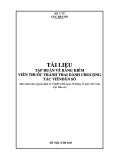
![Tài liệu tập huấn bảng kiểm viên thuốc tránh thai cho giảng viên tuyến tỉnh [Mới nhất]](https://cdn.tailieu.vn/images/document/thumbnail/2025/20250422/gaupanda088/135x160/3731745286813.jpg)
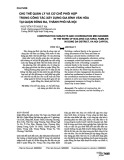

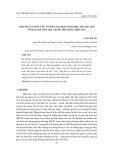
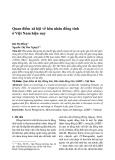

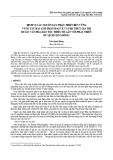
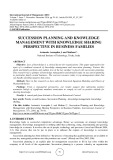
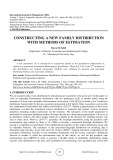


![Sổ tay Hướng dẫn truyền thông về lao động trẻ em [Mới nhất]](https://cdn.tailieu.vn/images/document/thumbnail/2025/20251114/kimphuong1001/135x160/7201763091001.jpg)

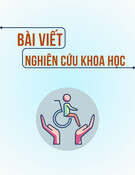





![Cẩm nang Thanh niên hành động [Mới nhất]](https://cdn.tailieu.vn/images/document/thumbnail/2025/20251017/kimphuong1001/135x160/1521760665202.jpg)

